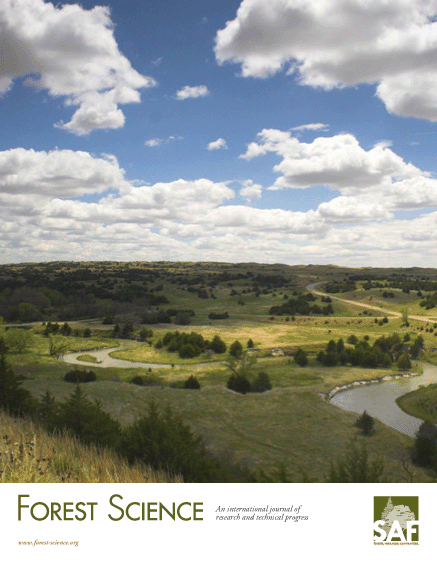-
PDF
- Split View
-
Views
-
Cite
Cite
Robert A. Monserud, Thomas Ledermann, Hubert Sterba, Are Self-Thinning Constraints Needed in a Tree-Specific Mortality Model?, Forest Science, Volume 50, Issue 6, December 2004, Pages 848–858, https://doi.org/10.1093/forestscience/50.6.848
Close - Share Icon Share
Abstract
Can a tree-specific mortality model elicit expected forest stand density dynamics without imposing stand-level constraints such as Reineke's maximum stand density index (SDImax) or the −3/2 power law of self-thinning? We examine this emergent properties question using the Austrian stand simulator PROGNAUS. This simulator was chosen specifically because it does not use stand density constraints to determine individual tree mortality rates. In addition, it is based on a probability sample of the population that includes the span of the data being used to test the hypothesis. Initial conditions were obtained from 27 permanent research plots that were established in young pure stands of Norway spruce (Picea abies L. Karst.) and Scots pine (Pinus sylvestris L.) in Austria. A growth period of 250 years was simulated. We conduct our test in two parts. First, we compare our simulated results to Reineke's theory of maximum density and stand density index by examining the self-thinning relationship between stem number per hectare and quadratic mean diameter (log-log scale). Second, we compare our results to Sterba's full competition density rule, which incorporates dominant height along with stem number and quadratic mean diameter. From the results for Norway spruce, we conclude that stand-level density constraints are not necessary to obtain Reineke's maximum size-density relations. Norway spruce results confirm that the maximum size-density relationship reflects reasonable and stable stand dynamics and conforms to that expected by Reineke's theory. Results from simulation of Scots pine also display reasonable and stable stand dynamics, except that they greatly exceed Reineke's maximum stand density index determined empirically from the literature. This Scots pine result argues for stand-level constraints (such as specifying SDImax) to ensure that the appropriate intercept for the maximum density line is used. Our second test revealed that the estimated maximum stand density index according to Sterba's theory was too high for both species, but that the relative rankings across plots were correct. Thus, we are left with ambiguous results. First, that a density-dependent individual-tree mortality model, developed on an adequate data set, is sufficient for the desired stand-level behavior of Reineke to emerge. Second, that stand-level constraints on SDImax need to be imposed if the underlying mortality modeling database is not adequate. FOR. SCI. 50(6):848–858.



